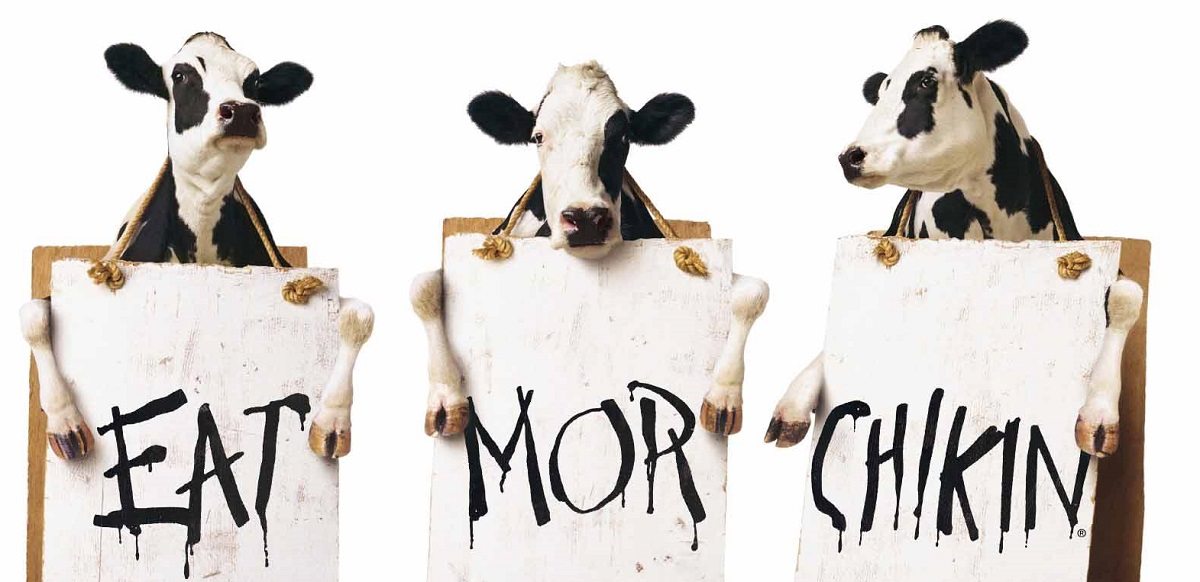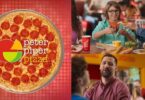These things happen. If you’ve been involved with the advertising arena for even a short stint, you have likely witnessed surprising wins and disappointing losses.
Recently, the DFW ad community was very surprised to learn fast-food chain Chick-fil-A chose McCann North America over the 22-year incumbent The Richards Group to be the lead agency on brand strategy moving forward.
Stan, as many refer to him, said in a press statement: “After 22 years of partnership of course we are sad to say goodbye, but we have a lot to be proud of. We never would have guessed that Chick-fil-A would pass KFC as the No. 1 chicken chain in the country. … That’s something both Chick-fil-A and Richards did together.”*
And what they did together can be considered nothing short of amazing. In 1994, Chick-fil-A hired The Richards Group to help them compete with big burger chains. The budget was small and the challenge was large. They wanted an attention-grabbing campaign and were looking to market the new free standing stores and rely less on shopping mall locations.
In 1995 The Richards Group launched the first cow-focused work featuring two 3D cows painting “Eat Mor Chickin.” It was the start of something big. Over the next two decades, the campaign became a cow empire that encompassed billboard creative for every occasion, television, cow calendars and more recently, the very popular cow-focused social media accounts with a Facebook page with over 700,000 followers.
In 2012, Chick-fil-A scored the title of No. 1 fast-food chain in terms of sales per store, averaging 3.1M per location. In 2013 the company surpassed sales of their largest chicken selling competition, KFC, despite a smaller ad budget and closing on Sundays.
The cow’s billboard creative has won many ad awards over the years, including a silver Lion at Cannes, a silver Effie for “sustained success,” was inducted into the OBIE awards Hall of Fame and also Madison Avenue’s Walk of Fame.
The history of how the cows came about and how they have continued to thrive as a brand is one for the books.
AdChat DFW interviewed David Ring, the art director who first came up with the idea of “the cows.”
AdChat DFW: You were at TRG in 1994 when they won the account. What inspired you to create the cows?
Ring: It took me years to figure out how it actually happened and if you look at the evolution of the work, you can see how we got from the big rubber chicken on the billboard to the cows. Chick-fil-A liked the idea of doing 3D billboards. I remember during the installation of the 48-foot, 3-piece rubber chicken, I noticed the billboard’s catwalk and thought I could do something with that and I tucked away the idea.


We did a few other billboards: one a take on the then popular Bart Simpson phrase “Don’t have a cow!”, and one with the billboard with a picture of the chicken sandwich halfway painted with a note and an empty ladder on the other unfinished half reading “Boss, Got hungry-back soon.” The idea was the workers got hungry looking at the chicken sandwich. So elements for the future cows were in each: the cow idea, the hand-written note, the catwalk.
In discussing the next outdoor assignment, David Salyers, VP of National and Regional Marketing for Chick-fil-A, said to me in his down-home Atlanta accent, “We want a billboard that people will laugh about in church on Sunday.”
I told Stan later that that was the best creative brief I’d ever been given. It said everything I needed to know. It summed up the whole brand.
AdChat DFW: How did that comment inspire the cows?
Ring: It allowed us to go out there to sell chicken sandwiches without showing the product.
In the next billboard design, the cows were born. It had the 3D cows standing on the catwalk, one on top of the other, painting the sign “Eat More Chickin” and there was no product shot at all.
I drew them on top of each other because I knew they couldn’t get up there to write on the billboard by themselves. I was actually inspired by Gary Larson’s Far Side cartoons and the way he illustrated things.

Incidentally, the product is rather brown and difficult to shoot even with the best food shooters. So the cows solved that problem, because you don’t have to see a picture of the product. You don’t have to break a promise you never make. The food is fantastic though.
AdChat DFW: What advertising had Chick-fil-A done in the past?
Ring: Before coming on board with us, Chick-fil-A had really not done much advertising except sampling their product in malls and local co-promotion with soft drinks but no brand advertising. Before we got that account, I thought it was pronounced chick-fil-lah.
I had only seen it in a mall and thought it was either something for girls or it had something to do with a horse.
AdChat DFW: Why do you think the account stayed with The Richards Group for as long as it did?
Ring: Like The Richards Group, they own themselves, which works really well for them and they can easily decide what flies and what doesn’t. You are free to succeed or fail as loudly as you want. I don’t know of any other businesses that have that much autonomy.
AdChat DFW: So you were the art director at the beginning, what about all the other work that has been done over 22 years?
I always say I did the first billboard, the first TV spot and Calendar with my partner Gail Barlow, all before digital came around. Later the agency made a font from the letters I drew for the cows handwriting. Gail Barlow and I wrote a bunch of headlines before I left The Richards Group in ’97 to go to DDB. When I left, I never dreamed it would go on for as long as it did. Hats off to the creatives that did keep it going. Even after I came back to The Richards Group in 2008, I never worked on the account again. But the cows lived on.
AdChat DFW: The cows are American icons and have received a lot of free press, right?
Ring: There was a statistic somewhere that we got so much free media because every time a cow got blown away because of a windstorm or stolen in a fraternity prank, Chick-fil-A would make the news. I think the calculation in free media was over a million dollars back then. A Dallas Morning News cartoonist drew up some chickens in a car driving away from a billboard and the caption was “Eat More Cows,” and Jon Stewart of The Daily Show used one of the cows as a prop for a joke once.
AdChat DFW: Did you ever get flack about the campaign?
Ring: I got some flack about the accuracy of the cows because dairy cows are black and white and they would never be in danger of being eaten. I just responded with “Yeah, but black and white cows just look better.”
AdChat DFW: Talk about the chicken wishbone.
Ring: As part of the original pitch we sent them a little direct mail piece, with a real chicken wishbone and a note that read something like, “We hope you grant our wish to be your agency.” I had to mount and frame it, that was cute.
AdChat DFW: Is it true your wife takes credit for the cow idea at cocktail parties?
Ring: This really is a funny story. In early 1994, my wife and I decorated our daughter’s nursery in a total cow motif, with a cow jumping over the moon, blue sky, cow sheets, everything was cow related. Then later that year, The Richards Group won the account. So at cocktail parties my wife always takes credit for the inspiration of the cow idea.
_______________________________________________
Rob VanGroden, a The Richards Group Group principal on the former Chick-fil-A account recently told Adweek, “The cows are a great story, and what makes a story interesting is conflict. Within a story, when the conflict is resolved, the story is over. With the cows, the conflict is never resolved. People root for the low-status character, and the cows are low status. They’re the underdog.” **
Stan also recently stated, “The cows are core to the brand’s success and certainly we are protective of them—we think we know them pretty well having given birth to and nurtured their unique personalities for more than two decades. We hope the cows live on and continue to thrive with a new family.”*











